Top 10 Most Common Genetic Disorders
No person is born with a choice of genes. Alterations in DNA can result from
a mutation in a single gene, chromosome abnormalities, or multi-factorial
disorders. When genetic disorders do occur, they are often rare, and affect one
person among thousands of individuals.

The following list summarizes some of the
more common disorders, from the rarest (#10) to the most common (#1).
10) Jackson-Weiss Syndrome
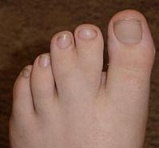 This syndrome is caused by a premature fusion of
the skull bones, which leads to a deformity of the head and face. Jackson-Weiss
Syndrome or JWS also causes mental retardation and crossed eyes. This disorder
is a very rare one and therefore its occurrence has not been regularly noted.
The syndrome, which is caused by a mutation in the FGFR2 gene, presents itself
by such symptomatology as an irregularly shaped skull, abnormal placement of the
eyes, a bulging forehead, and foot abnormalities. Anyone with the disorder
generally lives a normal lifespan. This syndrome is caused by a premature fusion of
the skull bones, which leads to a deformity of the head and face. Jackson-Weiss
Syndrome or JWS also causes mental retardation and crossed eyes. This disorder
is a very rare one and therefore its occurrence has not been regularly noted.
The syndrome, which is caused by a mutation in the FGFR2 gene, presents itself
by such symptomatology as an irregularly shaped skull, abnormal placement of the
eyes, a bulging forehead, and foot abnormalities. Anyone with the disorder
generally lives a normal lifespan.
|
Adenosine Deaminase (ADA):
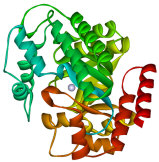
|
9) Severe Combined Immunodeficiency Disorder (SCID)
As its name suggests,
this disorder affects immune system functioning. An SCID baby’s life expectancy
is short, and whatever time he or she has left is spent, for the most part, in a
“bubble" completely cut off from the world. This disorder is caused by the
mutation of more than one gene and renders a person unable to fight off any kind
of germs. It is believed to be caused by the absence of, or a lack of Adenosine Deaminase (ADA), as well as notable defects in T and B cell responses.
8) Ectrodactyly
Also known as Lobster Claw Hand, Ectrodactyly is marked by one or more
missing digits on either the foot or hand. Individuals with the condition
usually have a cleft where their middle digits should be.
Ectrodactyly - Lobster Claw Hand or Foot
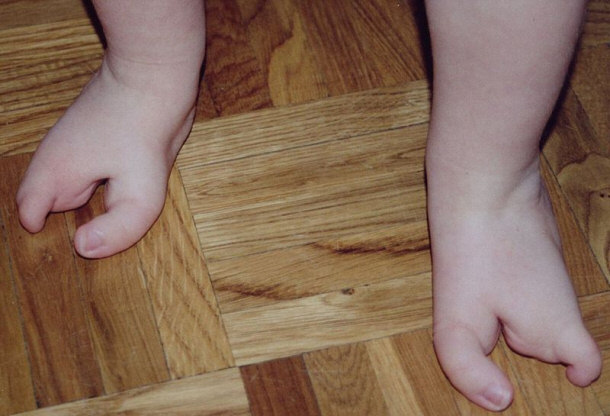
By Aurélie & Sylvain Mulard (Self-photographed),
via Wikimedia Commons
People with the
condition can suffer from hearing loss as well. Ectrodactly can be treated, to a
certain extent, with corrective surgery.
7) Alexander Disease
Alexander Disease is a very rare neurodegenerative
condition which affects the central nervous system. The sufferer slowly loses
control of his bodily and mental functions over time. Alexander Disease is
caused by a mutation in the 17q21 chromosome and is an autosomal dominant
disorder, meaning that people who have it have a 50% chance of passing it on the
next generation.
Neuropathology of Alexander Disease
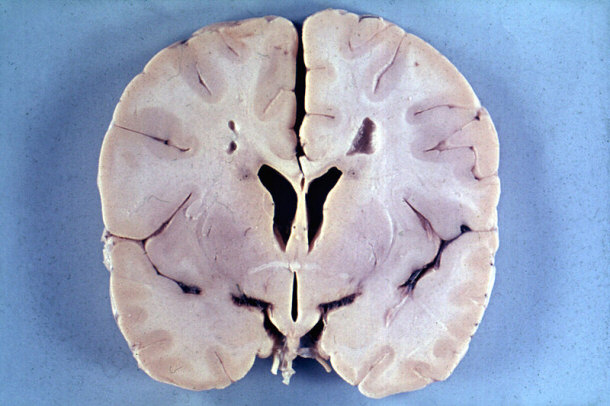
By Marvin 101 (Own work),
via Wikimedia Commons
The disease, which can be detected through an MRI, is exhibited
by such symptoms as megalocephaly, developmental delay and spasticity. To-date,
prognoses for the disease look bleak and no cure has been found for the
condition. People who suffer from the disorder generally don’t live more than
ten years.
6) Progeria
Progeria is a disorder that causes accelerated aging. Most of the
children that suffer from Progeria die in their teens as the result of
age-related conditions. Progeria causes such health issues as alopecia, bone
abnormalities, and all the other diseases that are related to the aging process.
Formally known as Hutchinson-Gilford Progeria Syndrome, deaths related to Progeria are often the result of a heart attack or stroke.
Physical Defects to the Left - Cell Nucleus Mutations to
the Right
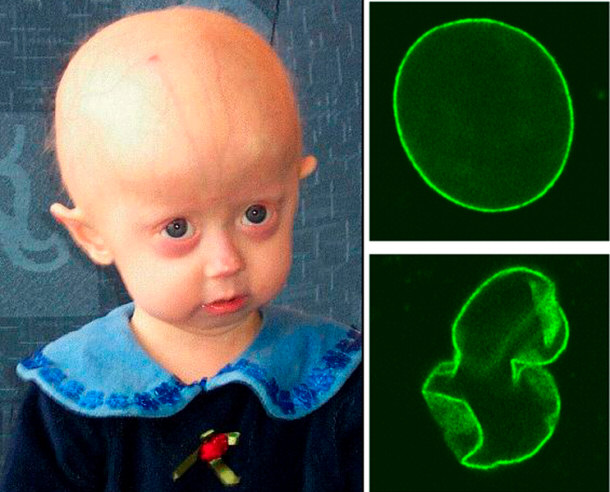
Progeria develops from a mutation in the LMNA gene. A very rare disorder,
Progeria occurs once in every 8 million births. Unfortunately, there is no cure
for this genetic abnormality.
5) Color Blindness
Color Blindness is the inability to see colors. This
condition is not exactly blindness and is simply a color vision deficiency. A
person with color blindness then cannot see specific colors or cannot
differentiate between a variety of hues. Color blindness occurs when the retinal
cones in the eyes do not develop correctly.
Red-Green Colorblindness Test
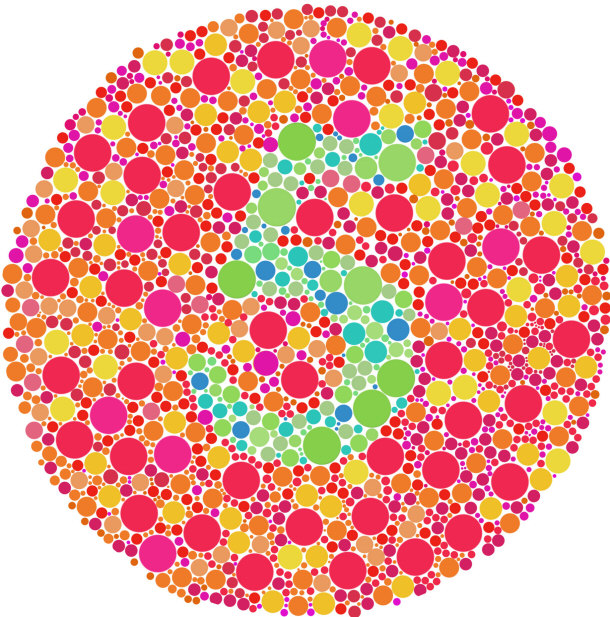
The genetic disorder can also be
acquired, or develop as the result of trauma or injury to the optical nerve. Men
are frequently affected by the condition.
4) Down Syndrome
Down syndrome, also known as Trisomy 21, is a disorder where
a child possesses three sets of chromosome 21 instead of two. A very common
genetic disorder, Down Syndrome often appears in the population as much as 1 in
691 times in some countries.
Young Girl With Down Syndrome
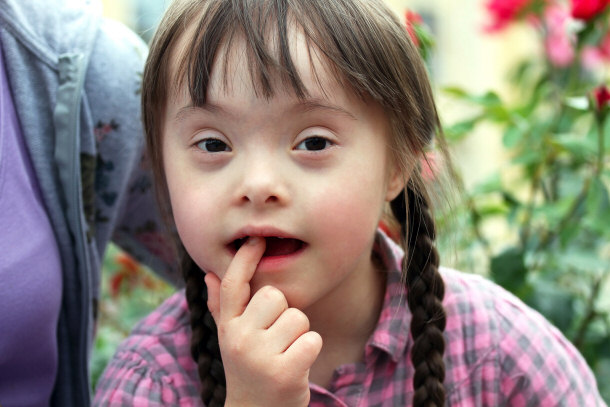
Problems associated with this disorder are delays
in physical growth, learning problems and facial irregularities. The IQ of Down
Syndrome children can vary to such an extent that some individuals can follow a
regular school curriculum while others, as adults, are unable to live
independent lives.
3) Hemophilia
Hemophilia is a very common genetic disorder related to the
blood. Sufferers can bleed to death if they sustain a minor injury as the blood
is unable to clot. As a result, most people do not know they have the disorder
until they become injured.
Czar Nicholas II Was Afflicted With Hemophilia

Hemophilia has been further classified into 2 parts -
Hemophilia A and Hemophilia B with Type A being more common. Males are
frequently affected by the disorder.
2) Sickle Cell Anemia
Sickle Cell Anemia is another blood- related disorder.
The condition is denoted by blood cells that are sickle in shape. The disorder
is believed to be a hemoglobin mutation caused in response to malaria. In fact,
research has shown that people with sickle cell anemia are less affected by
disease.
Sickle Cell Anemia
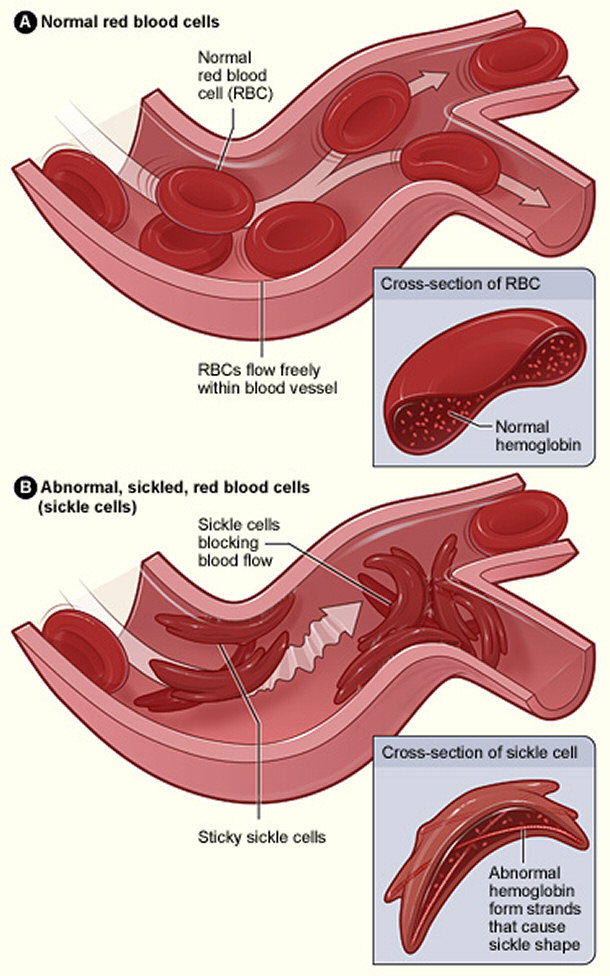
The disorder, which is common among people, whose ancestors lived in
tropical climates, suffer from a variety of health conditions, all which can be
linked to improper blood flow.
1) Autism
Autism is a neural condition where the information processing
capability of the brain malfunctions. Nerve cells and synapses connect
differently than what is considered normal, leading to a number of
complications.
Autism - Look At The Way the Toys Are Arranged

By Andwhatsnext at en.wikipedia,
from Wikimedia Commons
The condition is defined by such symptoms as repetitive behavior,
impaired social interaction and problems with verbal and non-verbal
communication. The exact cause for the genetic condition is not yet known.
Final Thoughts
Every person is unique because of the set of genes he inherits
from his parents. But, at the core level, we are basically the same. However,
DNA disorders and chromosome irregularities still leave us pondering about how
to deal with those anomalies.
Diseases & Conditions
Top Lists:
Top 10 Most Common Genetic Disorders
Top 15 Most Disturbing Skin Conditions
10 Unusual Phobias
Informational:
Diverticular Disease and Diverticulitis
What is Turner Syndrome and Why Does it Affect Only Females?
Alice in Wonderland Syndrome and How to Treat the Symptoms
Herniated Disc: Symptoms and Treatments
Pinch Nerve: The Cause of Remote Pain
Dealing With a Child Who Has a Fever
How Unhealthy Diet Could Trigger Inflammatory Arthritis
Phobias: Understanding How They Develop and Treatments
Depression Facts, Symptoms & Treatment
Earaches - Causes and Treatments
Symptoms of Borderline Personality Disorder and How to Deal with It
Seasonal Affective Disorder: Does Light Therapy Help?
What Really Causes Dandruff and How Can You Treat the Symptoms
Treating Plantar Fasciitis or Heel and Arch Pain
Symptoms and Treatments of Aplastic Anemia
Using Sclerotherapy to Get Rid of Varicose Veins
Are the Side Effects of HGH Supplements Worth It?
ADD/ADHD Symptoms and Treatment
What are the Options for Hair Loss Treatments
Options for Frontal Hair Loss Treatment |